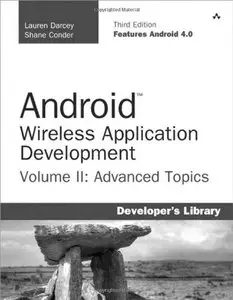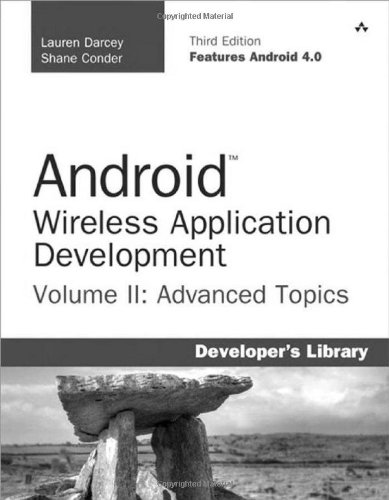Lauren Darcey and Shane Conder, "Android Wireless Application Development Volume II: Advanced Topics (3rd Edition)"
2012 | ISBN-10: 0321813847 | PDF, EPUB | 528 pages | 10 + 36 MB
2012 | ISBN-10: 0321813847 | PDF, EPUB | 528 pages | 10 + 36 MB
Android Wireless Application Development has earned a reputation as the most useful real-world guide to building robust, commercial-grade Android apps. Now, authors Lauren Darcey and Shane Conder have systematically revised and updated this guide for the latest Android SDK and tools updates. To accommodate their extensive new coverage, they’ve split the book into two leaner, cleaner volumes. This Volume II focuses on advanced techniques for the entire app development cycle, including design, coding, testing, debugging, and distribution. Darcey and Conder cover hot topics ranging from tablet development to protecting against piracy and demonstrate advanced techniques for everything from data integration and UI development to in-app billing.
Every chapter has been thoroughly updated to reflect the latest SDKs, tools, and devices. The sample code has been completely overhauled and is available for download on a companion website. Drawing on decades of in-the-trenches experience as professional mobile developers, the authors also provide even more tips and best practices for highly efficient development. This new edition covers
Advanced app design with async processing, services, SQLite databases, content providers, intents, and notifications
Sophisticated UI development, including input gathering via gestures and voice recognition
Developing accessible and internationalized mobile apps
Maximizing integrated search, cloud-based services, and other exclusive Android features
Leveraging Android 4.0 APIs for networking, web, location services, the camera, telephony, and hardware sensors
Building richer apps with 2D/3D graphics (OpenGL ES and RenderScript), animation, and the Android NDK
Tracking app usage patterns with Google Analytics
Streamlining testing with the Android Debug Bridge



